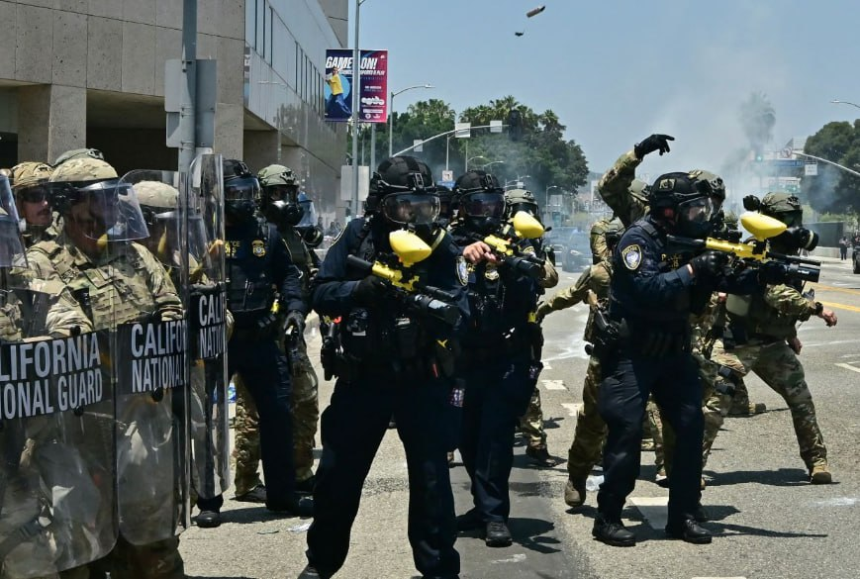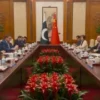United States President Donald Trump has ordered the deployment of 2,000 members of the National Guard to Los Angeles County to quell protests against coordinated immigration raids, bypassing the authority of the governor of California.
The extraordinary development came on Saturday, the second day of protests, amid clashes between law enforcement officers and demonstrators in the city.
The Los Angeles Police Department said Saturday’s demonstrations were peaceful and that “the day concluded without incident”. But in the two cities south of Los Angeles, Compton and Paramount, street battles broke out between protesters and police who used tear gas and flashbangs to disperse the crowds.
Local authorities did not request federal assistance. On the contrary, California Governor Gavin Newsom called Trump’s decision to call in National Guard troops “purposefully inflammatory”.
He accused the Trump administration of ordering the deployment “not because there is a shortage of law enforcement, but because they want a spectacle”.
How did it start?
It all started on Friday, when law enforcement officials in full riot gear descended on Los Angeles, rounding up day labourers at a building supply shop.
The raids, part of a military-style operation, signalled a step up in the Trump administration’s use of force in its crackdown against undocumented immigrants. The arrests were carried out without judicial warrants, according to multiple legal observers and the American Civil Liberties Union.
The Department of Homeland Security said more than 100 undocumented immigrants have been arrested in two days of raids across southern California.
After word spread through southern Los Angeles of immigration agents arresting people, residents came out to show their outrage, and a police crackdown followed.
What is the National Guard?
It is made up of part-time soldiers who can be used at the state and federal levels. Under the authority of state governors, National Guard troops can be deployed to respond to emergencies, such as the COVID pandemic, hurricanes and other natural disasters. It can also be used to tackle social unrest when local police are overwhelmed.
During times of war or national emergencies, the federal government can order a deployment for military service – that is, when the National Guard is federalised and serves under the control of the president.





